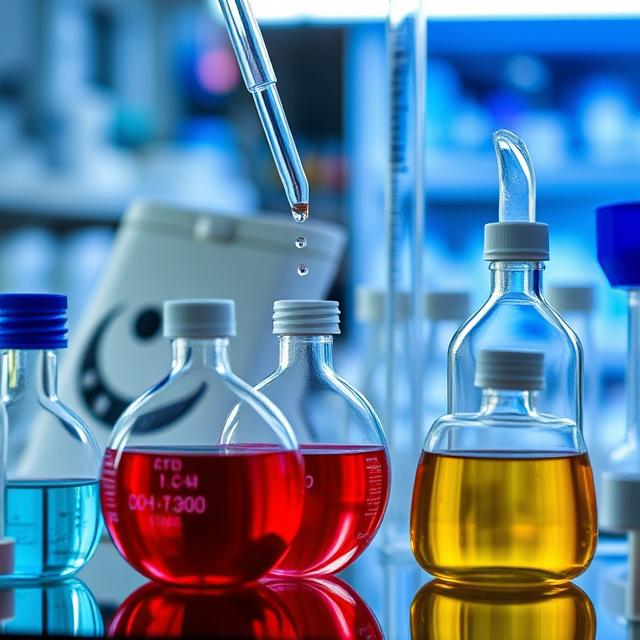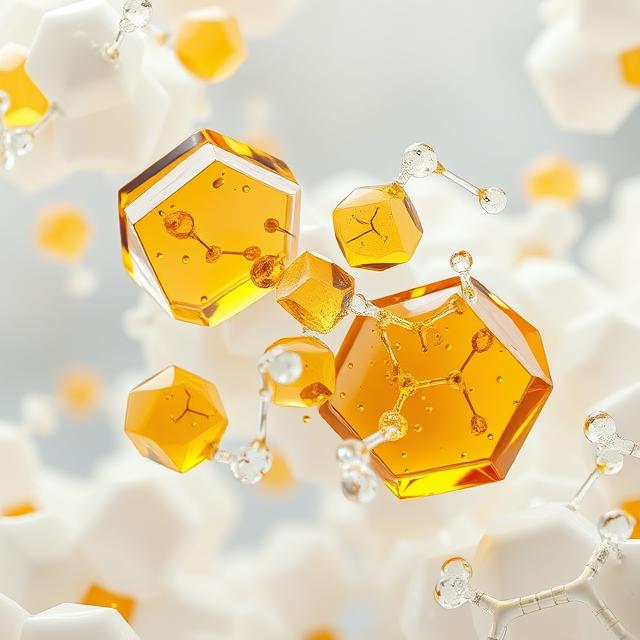The next wave of biomanufacturing is here. Dubbed Bioprocessing 3.0, it fuses cutting-edge synthetic biology, algal “green factories,” real-time AI control, and highly flexible hardware to produce everything from next-gen biologics to sustainable fuels, food proteins, and high-value specialty chemicals. This is not your grandfather’s stainless-steel vat fermenter—it’s a digital, data-driven ecosystem where engineers, biologists, mathematicians, and investors work hand-in-glove to accelerate innovation.

Below, we explore how universities like MIT, UC Berkeley, and EPFL, companies such as Ginkgo Bioworks (NYSE: DNA), Zymergen (NASDAQ: ZY), and Novozymes, plus investors from Flagship Pioneering to Bill Gates’s Breakthrough Energy Ventures, are shaping this transformative era.
1. From Fermentation 1.0 to Bioprocessing 3.0
- Fermentation 1.0 (1950s–1990s)
- Batch & Fed-Batch: Classic baker’s yeast / E. coli runs in fixed stainless-steel tanks.
- Minimal Analytics: Offline QC, manual sampling, basic sensors (pH, DO).
- Applications: Antibiotics (penicillin), commodity enzymes (amylases), simple small molecules.
- Fermentation 2.0 (2000s–2015)
- Single-Use Bioreactors: Thermo Fisher’s HyPerforma bags, Eppendorf’s CelliGen systems.
- Process Analytical Technology (PAT): In-line UV/Vis, Raman spectroscopy.
- Scale-Up: Biologics at 1,000–20,000 L scales—monoclonal antibodies, recombinant proteins.
- Bioprocessing 3.0 (2015–Present)
- Modular Facilities: Plug-and-play skids connect via standardized couplings—seed train, reactor, harvest, purification.
- Continuous & Perfusion Modes: 24/7 operation with cell densities >50×10⁶ cells/mL.
- Novel Chassis: Microalgae (e.g., Nannochloropsis at UC Stanford labs), non-model bacteria, filamentous fungi.
- AI & Digital Twins: NVIDIA BioNeMo collaborations with Ginkgo Bioworks for yield prediction, Siemens’ Xcelerator for virtual commissioning.
- Speed: “Design–Build–Test–Learn” cycles shrink from months to weeks, thanks to automated DNA assembly at IGEM facilities and high-throughput microreactor arrays.
2. Algae: Nature’s Original Solar Bio-Factories
Why algae? They capture CO₂ and sunlight directly, synthesize lipids, proteins, pigments, and high-value metabolites in photobioreactors—no sugar feedstocks required.

- Academic Pioneers:
- Prof. Pamela Silver (Harvard Wyss) engineers Chlamydomonas for therapeutic protein secretion.
- EPFL’s Center for Advanced Photonics developed LED arrays tuned to algal photosystems, boosting photosynthetic efficiency by 20%.
- Commercial Trailblazers:
- Solazyme (acquired by Corbion) scaled up Phaeodactylum oils for sustainable surfactants.
- AlgaBiotech (Series B led by Khosla Ventures) produces omega-3 fatty acids at pilot scale, partnering with DSM for global distribution.
- Next-Gen Photobioreactors:
- Vertical tubular designs stack in greenhouses, integrated CO₂ scrubbers from cement plants, inline turbidity and fluorescence sensors, and automated “piggyback” harvesting modules.
- Continuous cultivation yields stable biomass densit ies of 5–10 g/L, versus 1–2 g/L in batch mode.
- Applications:
- AlgaDairy: at UC Davis spin-out uses Chlorella to produce casein-like proteins with authentic textural properties.
- BlueBio Therapeutics: exploiting Spirulina chassis to express camelid nanobodies for oral immunotherapies.
3. AI & Digital Twins: The Process Brain
Imagine a “digital twin” of your entire plant, fed with live sensor data, historical runs, and mechanistic models. You can simulate a scale-up, predict oxygen transfer rates, or test a new feed strategy—all in silico.
- Key Players:
- NVIDIA BioNeMo teamed with Ginkgo to train transformer models on 10,000+ fermentation runs, optimizing feeds and boosting titers by 25%.
- Siemens Xcelerator powers digital twins of Cytiva’s single-use lines, cutting commissioning time by 40%.
- Machine Learning Techniques:
- Reinforcement Learning: Agents “learn” optimal pH and nutrient profiles by trial-and-error in a simulated reactor, then apply policies on the real system.
- Metabolic Flux Analysis: Integrates dynamic FBA (flux balance analysis) with ML surrogate models to redirect carbon toward product over biomass—Michael Jewett’s group at Northwestern pioneered rapid prototyping of cell-free lysates for flux measurements.
- Predictive Maintenance: Time-series models (LSTM networks) forecast pump failures, membrane fouling, and filtration breakthrough days in advance—GE Healthcare reported a 35% drop in downtime after deploying such analytics.
- Outcome:
- Fewer DoE runs, accelerated process validation, and adaptive control loops that maintain optimum conditions even when raw-material lots vary.
4. Modular, Continuous & Single-Use Reactors

The mantra: “one skid, multiple products.” Standardized modules—each with its own embedded controller—snap together to form a turnkey process.
- Continuous Bioprocessing:
- Perfusion Reactors: Single-use ATF (alternating tangential flow) modules maintain high‐density CHO cultures, producing monoclonal antibodies at 5 g/L/day.
- Cascade Microbial Systems: Multi‐module fermenters operate in parallel, feeding into continuous centrifugation and membrane‐chromatography trains (e.g., SMB, simulated moving‐bed) for proteins and enzymes.
- Single-Use Advances:
- Sterile connectors (CPC, SATA) enable rapid changeovers.
- High‐Pressure SuRe® Bags (Sartorius) support limited gas‐flushing strategies now used for microbial fermentation.
- Modular Facility Examples:
- Modular Biosystems installed a 2,000 L “CDMO in a box” at GSK’s Cambridge site—fully validated in 12 weeks.
- BioNex Solutions’ single‐use cell‐therapy line can pivot between CAR-T, AAV vectors, and iPSC expansion with RFID‐tracked bag inventories.
5. Synthetic Biology & Chassis Engineering
Bioprocessing 3.0 relies on rationally designed hosts that channel metabolic resources toward your product of interest.
- Non-Model Microbes:
- University of Wisconsin’s Johnson lab reprogrammed Pseudomonas putida for bioplastic precursor (PHA) production, achieving titers >100 g/L.
- Jay Keasling’s team at UC Berkeley built a synthetic yeast chromosome (Sc2.0) with built-in genomic “watermarks” for biocontainment.
- Minimal Genomes:
- JCVI-syn3.0 derivatives (Craig Venter Institute) stripped down to ~500 genes, freeing resources for high‐value molecule synthesis.
- Optogenetic Control Circuits:
- Light‐responsive promoters from Ivan Razinkov (Caltech) allow spatiotemporal regulation of gene expression without chemical inducers—key for dynamic pathway balancing.
- Automated Design–Build–Test–Learn (DBTL):
- In Silico: AI platforms (Benchling, TeselaGen) plan multiplexed CRISPR edits.
- Build: Opentrons robots assemble DNA constructs in 96-well formats.
- Test: High‐throughput microfermenters (Infors HT, ambr® 250) measure titer, productivity, and byproducts.
- Learn: ML algorithms correlate genotype and phenotype, iterating designs overnight.
This closed‐loop engineering slashes optimization timelines from six months to six weeks.
6. Integrated Downstream Processing 4.0
Bioprocessing 3.0 treats purification as an integral process, not an afterthought:
- Continuous Extraction & Capture:
- Two-phase aqueous extraction modules directly follow perfusion, reducing harvest volumes by 50%.
- Membrane Chromatography Cartridges (Cytiva’s Pellicon) capture viruses and large proteins in one step.
- Inline Analytics:
- NIR/XRF Sensors verify protein concentration and buffer composition in real time, enabling automated buffer exchange to precise conductivities.
- Microfluidic assays detect host‐cell DNA and endotoxin at ppm levels inline—pioneered by Prometheus Biosciences.
- Formulation Skids:
- Single‐use diafiltration and fill-finish pods mount directly downstream of chromatography, slashing hold times and cold-storage footprint.
7. Sustainability & the Circular Bioeconomy
A core tenet of Bioprocessing 3.0 is “waste = feedstock.”
- Water & Energy Loops:
- Enzymatic CIP (clean-in-place) reuses up to 80% of wash water.
- Waste heat from HVAC captured to warm algal photobioreactors—tested at DTU’s pilot facility in Denmark.
- Byproduct Valorization:
- Microbial biomass repurposed as animal feed or soil amendment.
- CO₂ off‐gassing from citric acid plants fed into upstream algal modules.
- AI‐Driven LCA (Life Cycle Analysis):
- Platforms like Sphera model cradle‐to‐gate impacts, pinpointing >40% carbon reduction opportunities through feedstock swaps or green energy.
8. Case Studies: Who’s Leading the Charge?
| Organization | Innovation | Impact |
|---|---|---|
| Ginkgo Bioworks (DNA) | AI‐augmented strain design for specialty enzymes—partnered with Roche and Bayer | 30% faster DBTL cycles |
| SynCell Therapeutics | Continuous CAR-T perfusion workflow, single‐use perfusion & automated QC | COGS down 45%; doses up 4× per month |
| AlgaFuel Inc. | Vertical photobioreactors capturing cement plant CO₂ to produce bio-oils | 200 tons/yr algal lipids for biofuels |
| BetaBio | GAN-based models predict optimal fermentation feeds, implemented at a 2,000 L plant | DoE runs cut from 30→5; titer +60% |
| Prometheus Biosciences | Inline microfluidic endotoxin & DNA sensors integrated with single-use formulation pods | Batch release times halved |
9. Market Landscape: Investors & Public Stocks
Venture Capital
- Flagship Pioneering and Andreessen Horowitz lead $200M+ rounds in SynCell and AlgaBiotech.
- Breakthrough Energy Ventures backs Solugen’s electro-fermentation for green hydrogen.
- Sequoia Capital invests in Benchling (now valued at $5B) for its AI lab notebook platform.
Public Markets
- Ginkgo Bioworks (DNA) trades around $9 per share, with a market cap oscillating near $3B—investors eyeing its move into performance-grade enzymes.
- Zymergen (ZY) at ~$3 per share after pivoting from materials to microbial drug precursors; revenue growth +25% YoY.
- Amyris (AMRS) ($8 per share) leverages modular yeast chassis to produce fragrances and pharmaceuticals, partnering with Givaudan.
- Cytiva (formerly GE Life Sciences) under Danaher (DHR) umbrella, sees $4B + in annual revenue from single-use systems and biotech consumables.
- Thermo Fisher Scientific (TMO), a $200B market‐cap giant, continues to acquire upstream and downstream tech providers (most recently acquiring Biosynth Carbosynth for $170M).
10. What’s Next: Roadmap for Bioprocessing 3.0 Adoption
- Digital Fabric: Deploy secure, high-bandwidth data networks in all facilities; integrate edge computing for real-time AI inference.
- Talent Fusion: Co-locate data scientists, bioengineers, and regulatory experts to cultivate interdisciplinary teams.
- Standardization: Adopt ANSI/ISA-88 modular control standards and open communication protocols (OPC UA) for skid interoperability.
- Regulatory Engagement: Partner with FDA and EMA on “AI Validate” pilot programs for AI-driven process validation and novel chassis approvals.
- Ecosystem Alliances: Form consortia—akin to BioProcess Systems Alliance—to share best practices on sustainability metrics and digital twin validation.
Organizations that embrace these pillars will slash time-to-clinic, cut COGS by 30–50%, and unlock new classes of bioproducts—from personalized cancer vaccines to climate-friendly polymers.
Conclusion
Bioprocessing 3.0 is more than a buzzword—it’s a paradigm shift. By weaving together algal chassis, AI-driven orchestration, modular hardware, and synthetic biology, industry leaders and academic pioneers are building an agile, sustainable bioeconomy. Investors are taking notice, pouring capital into startups and public equities poised to benefit.
The fermenter of tomorrow is a smart, adaptive reactor embedded in a digital twin, fed by carbon from the air, programmed by genome engineers, and monitored by predictive analytics. That vision is no longer science fiction but today’s roadmap for R&D labs and CDMOs alike. In Bioprocessing 3.0, we don’t just make molecules—we design living factories to solve the world’s greatest challenges, from health to climate to food security. The future of biomanufacturing is alive, data-rich, and ready to scale.
